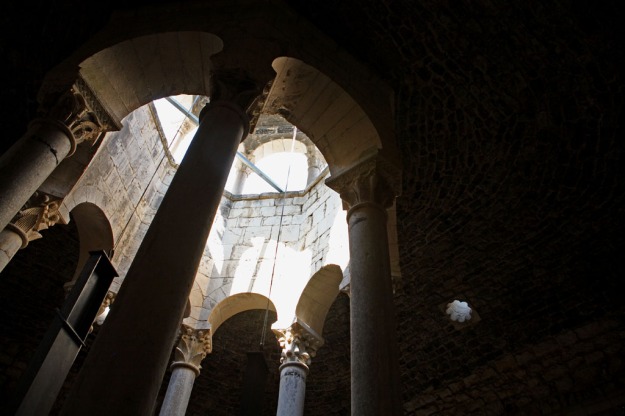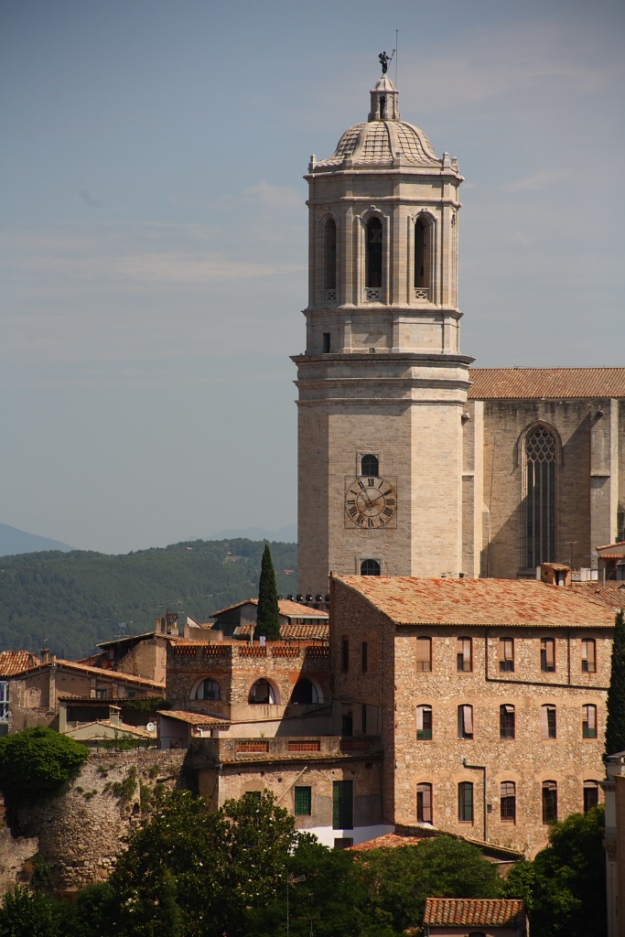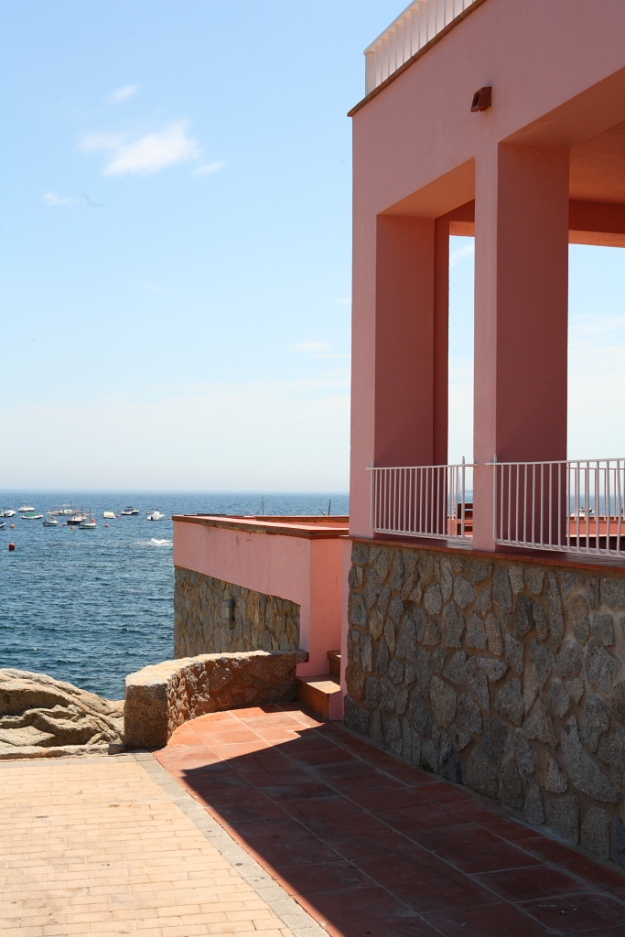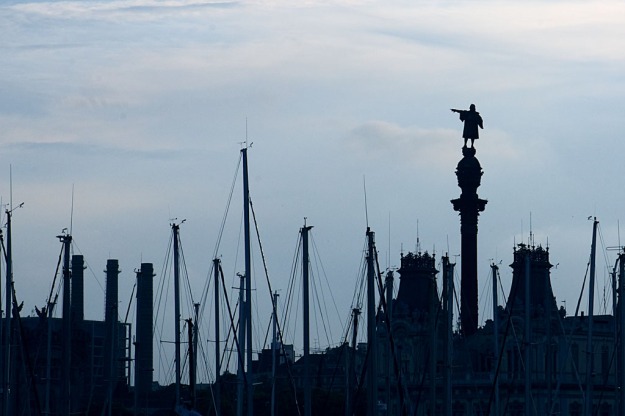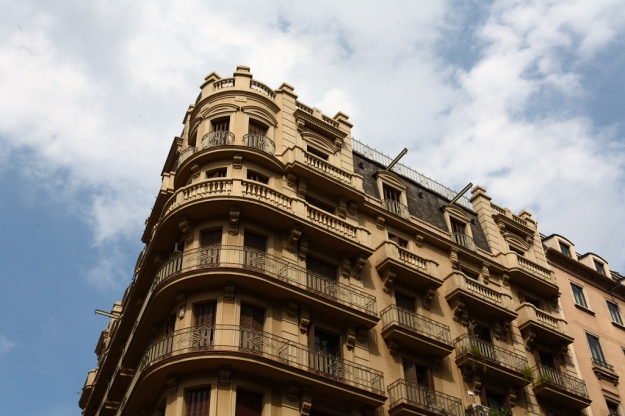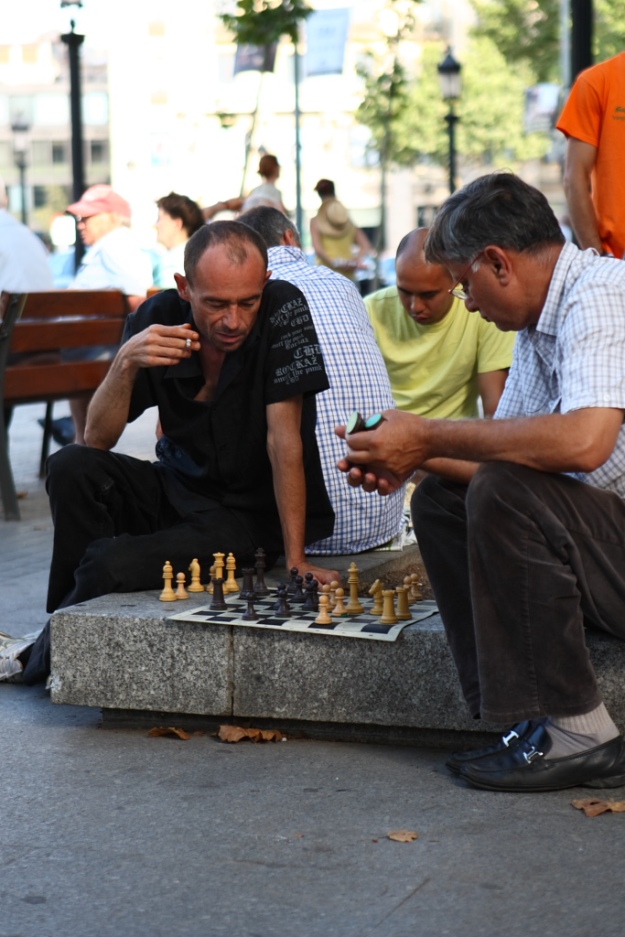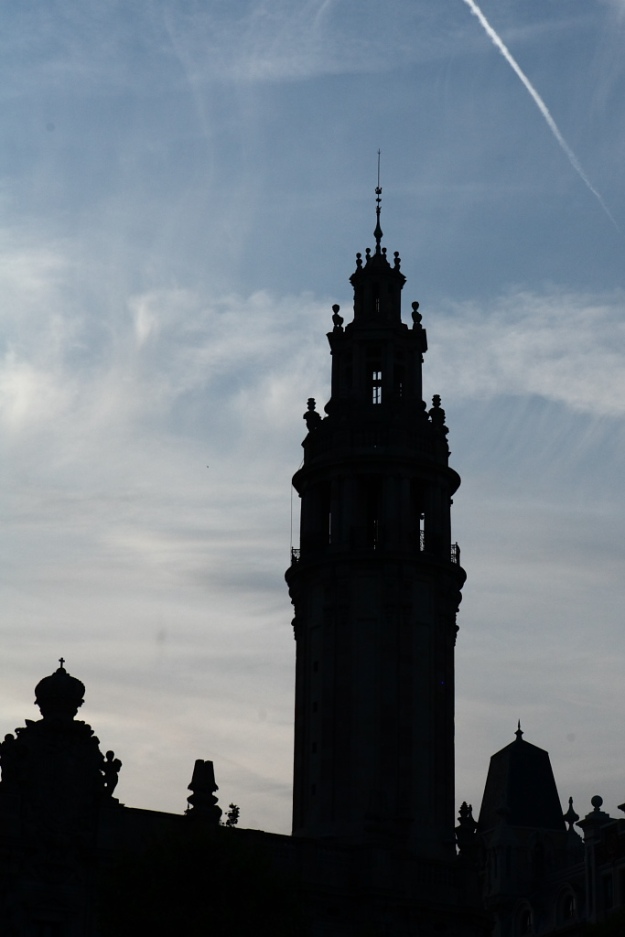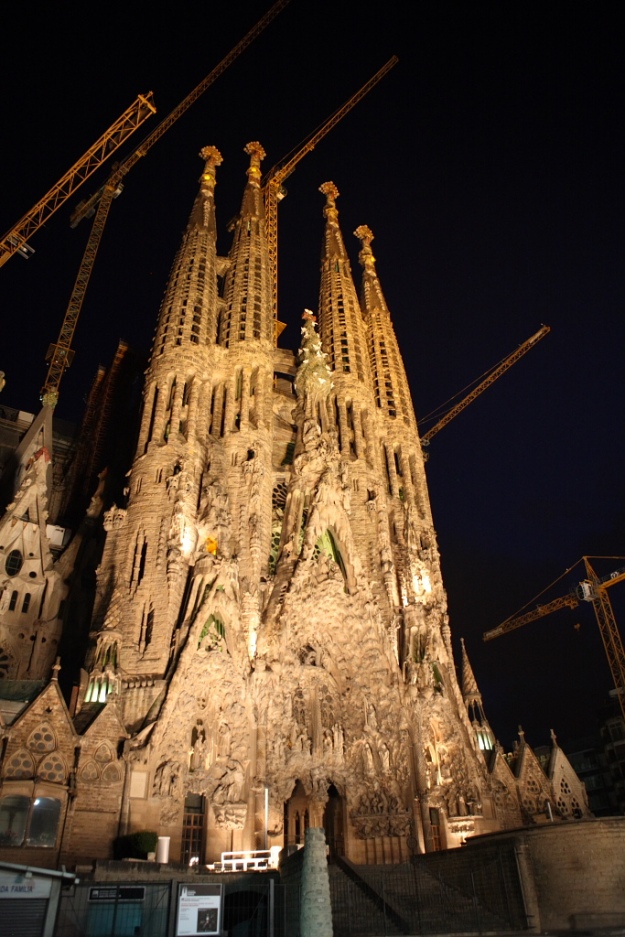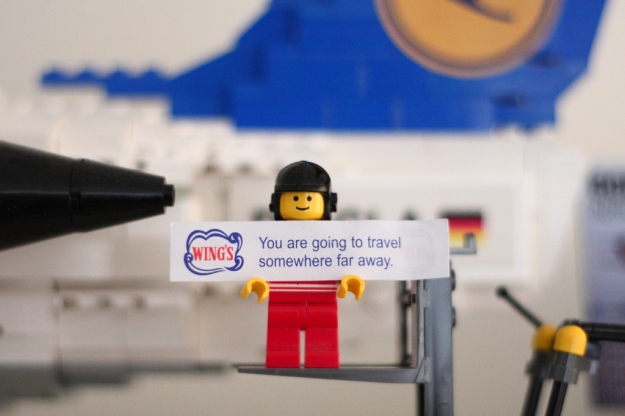
I had a fantastic day today. I took the subway to Placa Catalunya to pick up a bus trip to Monserrat. This is a mountain range which literally means mountain of swords/knives, as it has sharp outcroppings piercing into the sky. It took an hour to get out there, but our first stop on this bus trip was a local winery. I don’t know very much about wine, but I enjoy visiting wineries because they seem to have a blend of tradition and craftmanship and modern production engineering.
The Torres winery is situated just outside of Barcelona and is one of a hundred local vineyards as part of the entire Catalonian wine industry, which will ship over 250 million bottles of wine this year. The Torres family runs a multinational wine business, spanning Chile and the United States, and has won many international awards. How do I know this? Promotional video as part of the winery tour.
Unlike other winery tours I’ve been on, this one was very organized and we were taken on a trip around the compound in a small train of wagons. When I was in Nizza, Italy, I went to a small local vineyard where a young woman who was a little flustered with her English skills gushed through a description of the vineyard while demonstrating to us her portfolio of English swear words. She showed us their old steam train engine, the strange implements used to press grapes from the old days, and the new facilities they built over time, walking us through the boilers and cellars. We even met the owner in his Maserati, though admittedly he was there to greet the local restaurateur association.
Torres, on the other hand, is a magnitude more advanced. At the front gate, a control station checks incoming grapes in trucks. A picker arm is used to sample grapes from all parts of the truck’s hold and the bunches extracted are tested for sugar levels and other requirements. As if on cue, a man in a lab coat appeared (I’m not kidding) behind what appeared to be test tubes and flasks on the second floor of this guardhouse.
We then drove around some of the plant used to process wine, driving around down a ramp that encircled a post modern concrete building. Now parked in front of what seemed like a blank wall, an opening suddenly appeared, the seams flush with the siding. We drove in and were presented a multi screen video presentation in the dark, which seemed a bit disingenuous, at least until the screens raised and lights flooded the special reserve room filled with special casks of premium wine. The lady next to me remarked it seemed a little James Bond-esque, which I agreed. I later found out these reserve bottles were a hundred euros each and came in an attractive wooden box in the gift shop.

The tour continued around into the regular production factory, which kept bottles in a chilled warehouse of wire racks. I guess when you build such a large business, it can’t be monks putting bottles in handmade wooden shelves in a cave. We drove by another building, which in the floor to ceiling windows, had people in lab coats working behind equipment and what seemed like a focus group meeting in another. If we weren’t prepared by the promotional video ahead, I suspect I would have guessed they were actors putting on a show for investors.
They even have built a window along the whole side of an automated bottling line, capping each bottle with a cork and packing them into cardboard boxes. As an industrial engineer, I found it fascinating, though I would have appreciated actually going out into the vineyards and learning more about how they grow grapes. They do that on the tours in Niagara. We did see a few people picking grapes out in the field, but I suspect those were tourists who maybe even paid for the fun of doing it. Well, I’d pay for the fun of trying it.
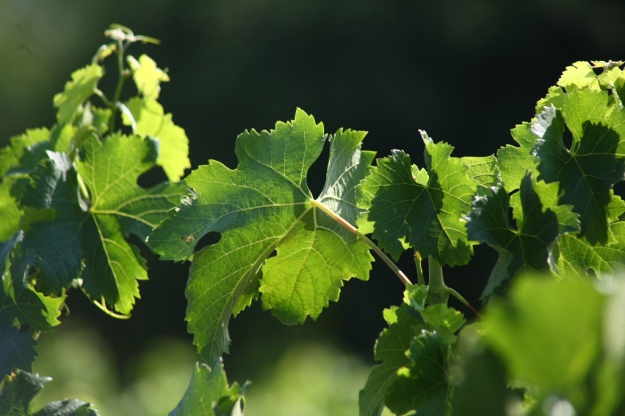
I guess what was impressed upon me was the seriousness and scope of the wine business here.
Today I was really happy about having that 75-300mm with me. I was standing out in the vineyards on my own and I wanted to shoot the plants in a creative way beyond a wide shot of the rows of grapes. I ended up compressing the background nicely, even though I was changing lenses in the middle of a dusty field to do it. You can see the dirt on the FF sensor on the shot above, but I really like this shot. One of my BP-511A’s is reporting back bad voltage, or it’s pooched. Nothing ruins a day like a low battery indicator at 9AM.

The bus continued to Monserrat, winding up the mountainside. The range juts out of the country side, multiple outcroppings reaching skyward. At the base is a station to take a short rack railway up along a twisty path to a thousand year old Benedictine monastery situated almost all the way up the mountain. The railway was originally built in 1892 but the current railway uses modern electrified trains with a narrow gauge track. Just out of the station, four of the five kilometers are built with racks in the middle.

In their monastery, the monks tend to their shrine, which attracts thousands of visitors a year. They also have a renown boys choir, which sings every day at noon, except this week, when they were on summer vacation. The monks have built a basilica up on the mountain which contains the Black Madonna, a carving that is the source of all those pilgrimages. The basilica front was surrounded by the rest of the more modern monastery building, forming a square, illuminating the floor with bright sun. Visitors somehow naturally gravitated to the center of this square, taking turns at standing in the sun, arms open, basking in the glory of the church. I’m not sure where they got their cue to do that, but it was an interesting sight.

I had an interesting lunch which included rabbit with snails and salted cod over salad, bought a postcard and mailed it off and looked off the observation decks into the valleys below.

The final stop of the bus trip was the town of Sitges, one of the most popular beach resorts in Spain. Unlike Calella de Palafrugell yesterday, Sitges’ beach is huge, with thousands of beachgoers in their chairs and towels out on the ocean. Sitges does have its own charm, in the form of old houses built by the Americanos and Indianos, expatriat Spaniards who went to the New World to trade and returned with wealth, building mansions in Sitges.
I can’t say I really enjoyed Sitges that much, as the afternoon sun was shining bright again and the place seemed tuned for the beach party crowd that had not shown up yet as they were sleeping off their hangovers. I ended up at a small bar, drinking the local beer and chatting with travelling Australians.

After we returned, folks on the bus had suggested a local tapas bar called Cal Pep, far away from the Ramblas, not far from the place I noted to go back to the night before. They were going to take a cab, but I elected to walk down on my own, as I like wandering the city. Wandering around on your own on foot leads you into surprising discoveries. Sometimes it’s trivial but quirky, like walking into a Barcelona electronics store and hearing Nelly Furtado on the stereos. Tonight I walked into a church I happened upon, quite nondescript on the outside as it was nestled into adjacent streets and buildings. Inside was a beautiful gothic nave, lit perfectly in the early evening.
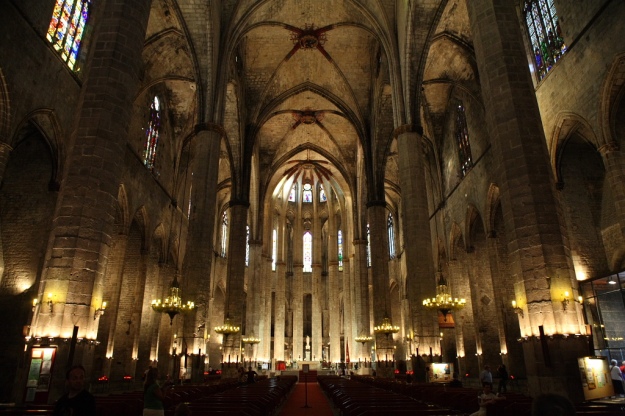
After walking around in progressively smaller squares, I got to the right placa and couldn’t find the restaurant at all, though I confirmed I was in the right square referring to the guidebook map I’d snapped with the HTC Touch I took along with me. Nestled into the corner of the square, nondescript, was this place and entering, I amazingly got a spot at the bar. It is a very small place, highly rated by food and travel guides and a lineup at this early evening of 8PM already formed twenty deep on the back wall. It apparently stretches outside and around in the proper 10PM dinner service the Barcelonans usually take. The proprietor motioned me to a seat immediately as there was a spare spot right up front for one and joked about the 5D/24-70mm I dropped onto the bar top. It’s not the place where you study the menu, he said. I agreed to seafood and soon plates of food appeared in front of me. Apparently they serve whatever is fresh from the sea that day.
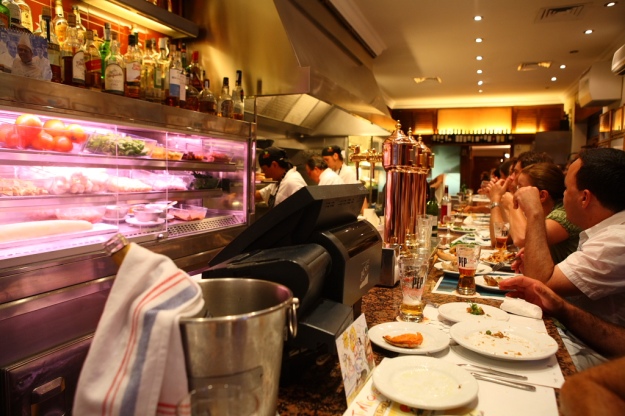
Unlike other places I’ve been this week, this feels like a place where the locals and expat crowd hangs out. The guy next to me was from San Francisco and wanted a bit more beer. So he was poured a beer in a small cup. A couple was being introduced to the city by a resident to my left. He was doing a play by play as the meal progressed. It felt immediately warm and friendly, down to the point where the guy actually forced me not to use a fork when eating a plate of fresh clams, done up in garlic, chilies and salt. Before I could finish this first plate, along came a plate of roasted scotch peppers, and a second plate of miniature prawns, smelt and calamari. The squid was perfectly done, taut by not gummy; the fried prawns and smelt crunched lightly, dosed in sea salt. I got a handshake when I paid my bill and left. It made me feel warmly welcome, which in a world of drawing your name backwards on your tablecloth / greeter at the front door kind of service, felt unusually authentic.



